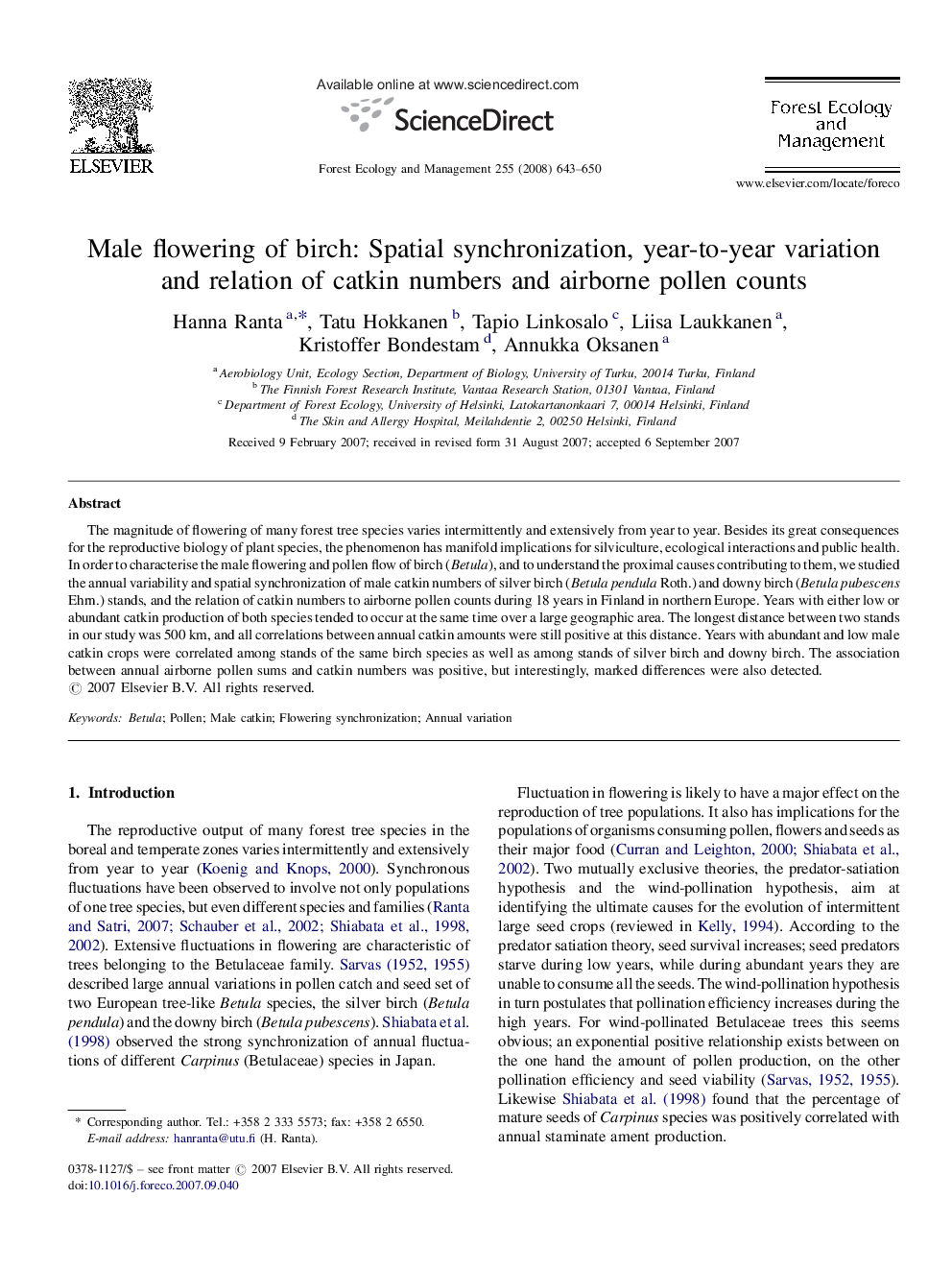| Article ID | Journal | Published Year | Pages | File Type |
|---|---|---|---|---|
| 89841 | Forest Ecology and Management | 2008 | 8 Pages |
The magnitude of flowering of many forest tree species varies intermittently and extensively from year to year. Besides its great consequences for the reproductive biology of plant species, the phenomenon has manifold implications for silviculture, ecological interactions and public health. In order to characterise the male flowering and pollen flow of birch (Betula), and to understand the proximal causes contributing to them, we studied the annual variability and spatial synchronization of male catkin numbers of silver birch (Betula pendula Roth.) and downy birch (Betula pubescens Ehrn.) stands, and the relation of catkin numbers to airborne pollen counts during 18 years in Finland in northern Europe. Years with either low or abundant catkin production of both species tended to occur at the same time over a large geographic area. The longest distance between two stands in our study was 500 km, and all correlations between annual catkin amounts were still positive at this distance. Years with abundant and low male catkin crops were correlated among stands of the same birch species as well as among stands of silver birch and downy birch. The association between annual airborne pollen sums and catkin numbers was positive, but interestingly, marked differences were also detected.
